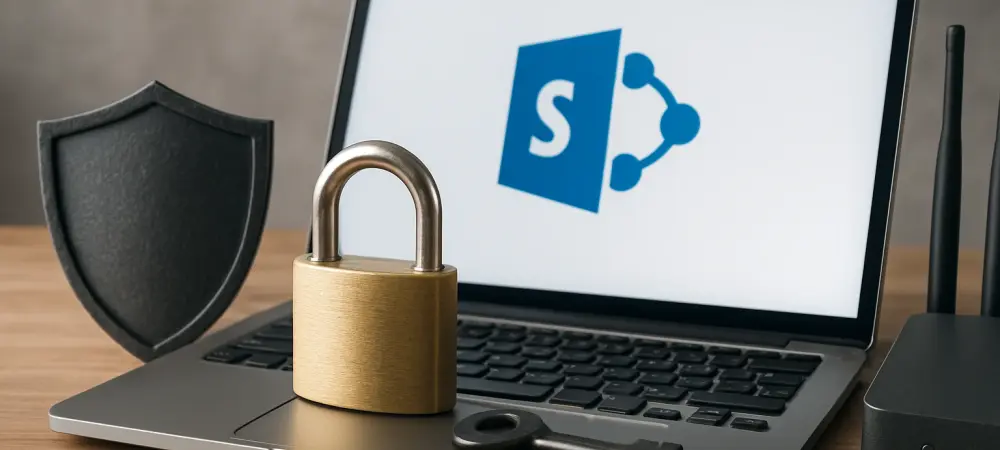In an era where digital infrastructure is a cornerstone of operational efficiency, safeguarding these systems against vulnerabilities is paramount, focusing on the ToolShell vulnerability affecting Microsoft SharePoint servers. This critical flaw, CVE-2025-53770, has allowed cybercriminals to target organizations with precision, aiming to gain unauthorized access to sensitive SharePoint content. Breaches across various sectors, including federal agencies and energy companies, highlight the urgency to address these attacks. With entities like Microsoft and CISA issuing serious warnings and necessary patches, understanding the threat landscape and adhering to best practices become essential for cybersecurity.
Understanding the Threat Landscape
The ToolShell vulnerability represents a significant danger to SharePoint servers, noted for its capacity to enable full access to internal configurations and files. This is not merely a theoretical risk; active exploitation has led to compromised systems in multiple high-profile sectors. As Microsoft has identified, the flaw traces back to prior vulnerabilities and has been leveraged by threat actors, including those linked to state-sponsored groups. The immediacy of the threat, underscored by swift breach activities, highlights the critical need for organizations to stay informed and vigilant.
Addressing ToolShell attacks holds critical importance beyond immediate security concerns. The repercussions of a successful breach can ripple through an organization, affecting everything from operational integrity to legal compliance. As attackers become more sophisticated, enterprise-grade security measures must keep pace. This requires not only technological defenses but also comprehensive strategies that encompass training, policy development, and continuous monitoring. A proactive stance against such vulnerabilities is essential for maintaining the trust of stakeholders and ensuring business continuity.
The Importance of Following Best Practices
Security best practices have become a linchpin in the defense against cyber threats. Their role in establishing a robust security posture cannot be understated, as they provide a systematic approach to identifying and mitigating vulnerabilities. Implementing these frameworks equips organizations to respond effectively to potential security incidents, reducing both the likelihood and impact of attacks.
The advantages of adhering to best practices extend beyond immediate threat mitigation. By building a security culture rooted in these practices, organizations can foster resilience against an evolving threat landscape. Such measures not only protect sensitive data and critical infrastructure but also reinforce trust with customers and partners. An organization prioritizing security best practices demonstrates commitment to safeguarding its digital assets and the broader ecosystem in which it operates.
Implementing Best Practices for Security
Regularly Update and Patch Systems
Keeping systems consistently updated is a fundamental step in combating cyber threats. Patching vulnerabilities as they are discovered prevents attackers from exploiting known weaknesses. This approach was effectively demonstrated when organizations implemented Microsoft’s patches for CVE-2025-53770, ceasing the exploitative capabilities of threat actors.
In a notable case, an organization successfully averted multiple breaches by maintaining a proactive patching schedule. Regular assessments and immediate application of updates ensured that systems remained resilient against emerging threats. Such examples highlight how a disciplined approach to system updates serves as a robust defense mechanism against vulnerabilities.
Conduct Routine Security Audits
Security audits play a crucial role in identifying potential security gaps and assessing existing controls. By routinely evaluating systems, organizations can pinpoint vulnerabilities and rectify weaknesses before they are exploited. Implementing a structured audit process involves reviewing access logs, evaluating security protocols, and stress-testing systems to gauge their robustness.
One organization averted several breach attempts by conducting regular, thorough security audits, revealing weaknesses before they could be exploited. A structured audit practice allowed for precise adjustments to security measures, enhancing the organization’s overall security posture. These audits serve as a proactive tool in identifying vulnerabilities and reinforcing defense mechanisms.
Strengthen Access Controls and User Permissions
Access control and user permissions form the backbone of a fortified network environment. By appropriately managing who has access to what data, organizations can minimize the risk of unauthorized access. Enhancing permissions involves deploying role-based access controls and regularly reviewing user access rights to ensure they align with current responsibilities.
In a real-life scenario, an organization successfully safeguarded its sensitive data by implementing stringent access management protocols. By leveraging granular permissions and access controls, they effectively restricted data access only to authorized personnel, thus preventing unauthorized data exfiltration. Such strategies are vital in ensuring data integrity and security.
Educate and Train Employees on Cybersecurity
The human factor remains a critical element in an organization’s security infrastructure. Comprehensive cybersecurity training programs empower employees with the knowledge to recognize and respond to potential threats. By cultivating a security-aware culture, organizations can significantly reduce the likelihood of accidental breaches.
A practical example saw an organization improve its security posture by integrating regular cybersecurity training for its workforce. This educational approach fostered a vigilant environment where employees proactively contributed to the organization’s security efforts. As a result, the organization saw fewer security incidents and developed a stronger, more embedded security ethos throughout its operations.
Conclusion and Recommendations
Following the recommended security practices is vital in strengthening the resilience of organizations against evolving threats like the ToolShell vulnerability. Each strategy, from maintaining updated systems to fostering a culture of cybersecurity awareness, serves as a crucial pillar in safeguarding digital assets against exploitation. Through rigorous application of these measures, organizations can effectively counter emerging threats, protect sensitive data, and maintain operational integrity. Future success in cybersecurity will rely on the continued commitment to these best practices. Organizations should regularly assess and evolve security strategies to remain adaptive to the ever-changing threat landscape. By embracing a proactive approach to security, organizations can fortify their defenses, ensuring resilient infrastructure well into the future. This sustained vigilance and innovation in security practices will provide a robust foundation for mitigating future risks and aligning with evolving cybersecurity standards.

